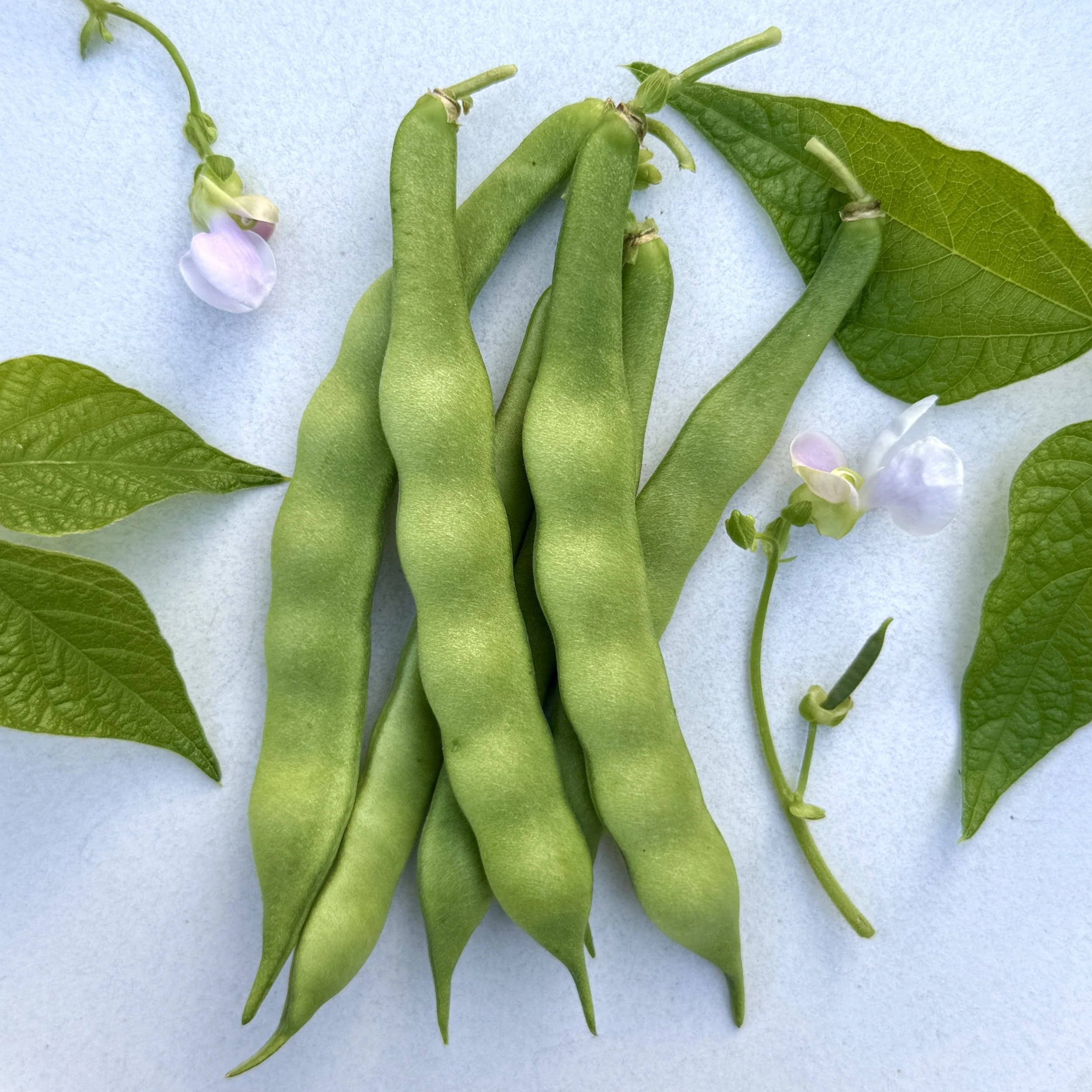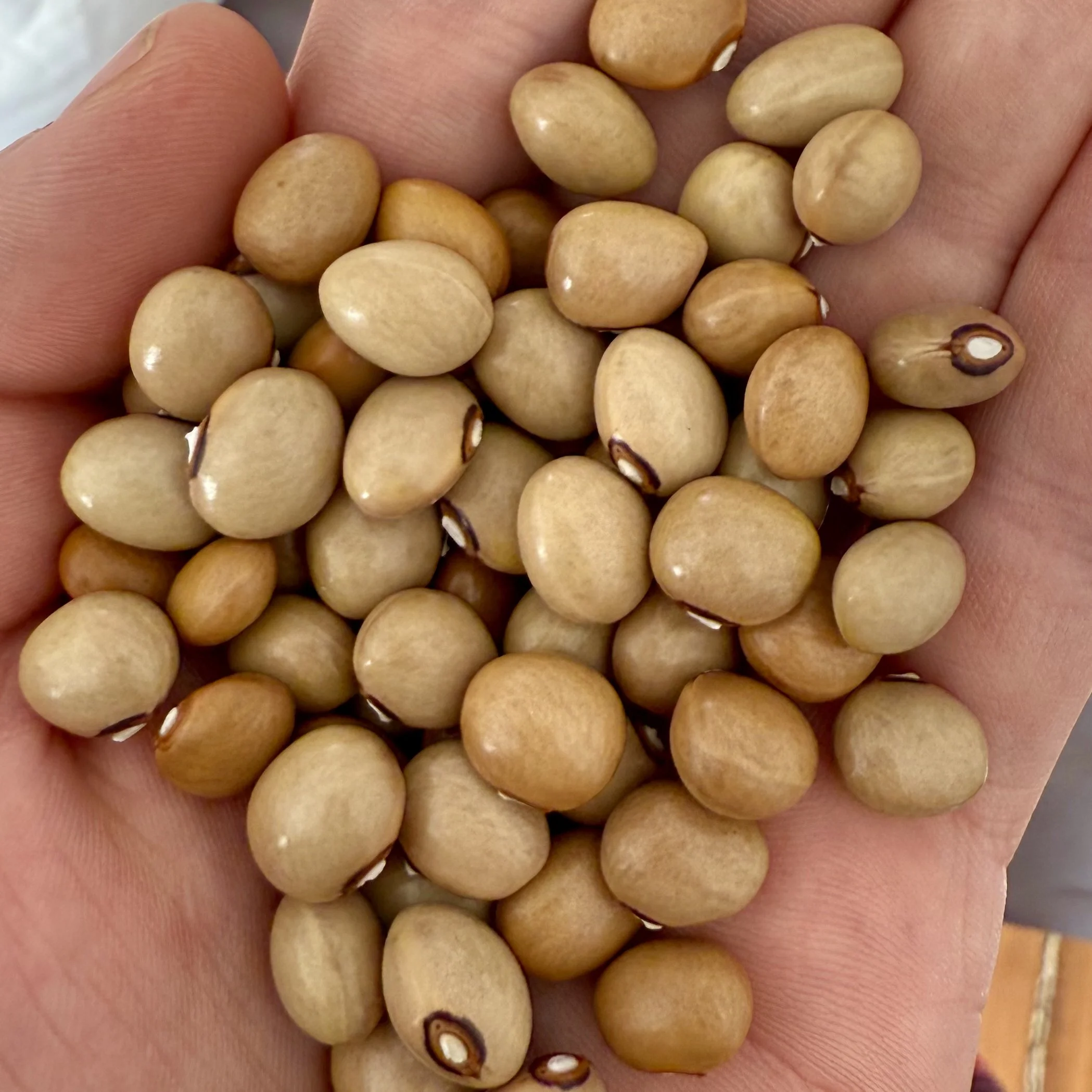 Image 1 of 1
Image 1 of 1


Bean, Hidatsa Shield Figure
Product Description: (Phaseolus vulgaris) Hidatsa Shield Figure was one of just five dry bean varieties cultivated by the Hidatsa people of North Dakota and unlike most heirlooms, its popularity has only grown with time.
Whenever these beans sell out and need replenishing, it always feels like a brief intermission from the garden grind. They are rapidly maturing, impressively high-yielding, and never seem to cause a fuss. Each pod contains 4-5 large white beans with speckled orange and maroon saddles resembling a shield. Hidatsa Shield Figure boarded the Slow Food Ark of Taste in 2005. Pole habit. Open-pollinated. 35 seeds per packet.
Growing Information: Direct seed in full sun after all danger of frost has passed. Sow beans 1 inch deep with 2-inch intervals at the base of a trellis. The Hidatsa Native Americans traditionally planted this variety together with corn and winter squash. This growing method is known today as the “Three Sisters”, in which corn stalks serve as trellises to support the vining bean plants, and in return, the beans fertilize the soil by replacing the nitrogen that the corn had used to grow. The squash acts as a ground cover to suppress weeds and block the sun from drying out the soil. In some cases, the Hidatsa people would plant the beans with sunflowers rather than corn.
At the end of the growing season, allow the entire plant to die back and dry until the bean pods are brown and brittle. Make sure that your plants are receiving adequate airflow during this time to prevent excessive moisture and fungal growth. However, a small amount of spotting on the outside of drying pods is completely normal and will not affect the quality of your beans. Once dry, harvest the pods and crack them open. Sort out any beans that are damaged or showing signs of rot, then store them in a glass jar or other airtight container until use. 90 days to maturity.
How To Save Bean Seeds
Allow the plant to dry out completely. Mature pods will be brown and brittle. Make sure that your plants are receiving adequate airflow to prevent excessive moisture and mold growth throughout the drying process. However, a small amount of mildew spotting on the outside of drying pods is completely normal and has no reason for concern. Once dry, harvest the seed pods and crack them open. Sort out any damaged, misshapen, or rotting beans. Continue the drying process if necessary then store them in a cool, dry place.
Product Description: (Phaseolus vulgaris) Hidatsa Shield Figure was one of just five dry bean varieties cultivated by the Hidatsa people of North Dakota and unlike most heirlooms, its popularity has only grown with time.
Whenever these beans sell out and need replenishing, it always feels like a brief intermission from the garden grind. They are rapidly maturing, impressively high-yielding, and never seem to cause a fuss. Each pod contains 4-5 large white beans with speckled orange and maroon saddles resembling a shield. Hidatsa Shield Figure boarded the Slow Food Ark of Taste in 2005. Pole habit. Open-pollinated. 35 seeds per packet.
Growing Information: Direct seed in full sun after all danger of frost has passed. Sow beans 1 inch deep with 2-inch intervals at the base of a trellis. The Hidatsa Native Americans traditionally planted this variety together with corn and winter squash. This growing method is known today as the “Three Sisters”, in which corn stalks serve as trellises to support the vining bean plants, and in return, the beans fertilize the soil by replacing the nitrogen that the corn had used to grow. The squash acts as a ground cover to suppress weeds and block the sun from drying out the soil. In some cases, the Hidatsa people would plant the beans with sunflowers rather than corn.
At the end of the growing season, allow the entire plant to die back and dry until the bean pods are brown and brittle. Make sure that your plants are receiving adequate airflow during this time to prevent excessive moisture and fungal growth. However, a small amount of spotting on the outside of drying pods is completely normal and will not affect the quality of your beans. Once dry, harvest the pods and crack them open. Sort out any beans that are damaged or showing signs of rot, then store them in a glass jar or other airtight container until use. 90 days to maturity.
How To Save Bean Seeds
Allow the plant to dry out completely. Mature pods will be brown and brittle. Make sure that your plants are receiving adequate airflow to prevent excessive moisture and mold growth throughout the drying process. However, a small amount of mildew spotting on the outside of drying pods is completely normal and has no reason for concern. Once dry, harvest the seed pods and crack them open. Sort out any damaged, misshapen, or rotting beans. Continue the drying process if necessary then store them in a cool, dry place.






